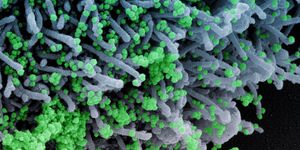How to Program Your Child's Brain for Obesity: Mother's diet alters the circuitry of eating
Is it different metabolic activity, environment, behavior, genetics? The connection between a mother and their child's obesity is an active area of research. New findings shed light on how receiving too much nutrition early in life primes the brain for adult obesity.
Children of obese women are more likely to develop obesity and type 2 diabetes during adulthood. According to a 2019 PLoS Medicine study, if a mother is obese before conception the odds their child will be obese increased by over 250%.
Overnutrition is the opposite of malnutrition but still represents an imbalance in nutrients. Diets brimming with fats, refined sugars, and highly processed foods lead to overnutrition and obesity. These diets remodel more than just body composition. They change brain circuitry.
New research out of the Child Health Institute of New Jersey and Robert Wood Johnson Medical School identified one way a mother's eating patterns before and after giving birth, known as the perinatal period, might prime their offspring for obesity.
Eating is an essential behavior regulated by brain circuitry and hormones. The lateral hypothalamic area (LHA) is part of a brain pathway influenced by feeding hormones and is responsible for processing aversive and appetizing tastes. Via its connection with reward areas in the brain (VTA), it promotes food seeking and consuming in many animals.
Researchers Shrivastava et al. sought to determine if overnutrition early in development alters the LHA’s ability to suppress or drive eating behavior. In their Molecular Metabolism paper using mice, they discovered perinatal overnutrition during development increased the excitability of the pathway between LHA and the bed nucleus of the striatal terminus (BNST).
Maternal overnutrition altered the connection between an offspring’s BNST and LHA. The amount of alteration predicted the rate of weight gain during the offspring’s early life. Weaker connectivity correlated with more weight gain. As adults, the LHA of over-nourished mice displayed increased excitability and they were prone to obesity when highly palatable food was available.
Knowing more about how the perinatal environment affects eating behavior offers hope for breaking the cycle of obesity. Instead of a genetic life sentence, a mother’s eating choices have the power to guide the future health of their offspring. This work also highlights a specific brain pathway for therapeutic treatment.
Future research in laboratory animals and humans is necessary to understand how BNST/LHA activity changes feeding behavior and physiology.
Sources: Molecular Metabolism, Neuron, PLoS Medicine









